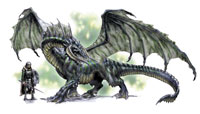 it is called the aligator snaping turtle.is it a tortigator or a aligator snaping turtle.dont let it snap you or it will crack you.
it is called the aligator snaping turtle.is it a tortigator or a aligator snaping turtle.dont let it snap you or it will crack you.
Monday, February 25, 2013
tortigator or aligator snaping turtle?
 it is called the aligator snaping turtle.is it a tortigator or a aligator snaping turtle.dont let it snap you or it will crack you.
it is called the aligator snaping turtle.is it a tortigator or a aligator snaping turtle.dont let it snap you or it will crack you.
Wednesday, October 24, 2012
dragon history
 elcome, traveler, to Draconika Dragons. This site contains a number of articles on dragon information, a community forum, and a gallery of dragon pictures. Draconika was started as a project for a college English class in 2004. Since then, it has grown to be one of the premier websites about dragons on the Internet. I hope you will find this to be the best dragon resource on the web.
elcome, traveler, to Draconika Dragons. This site contains a number of articles on dragon information, a community forum, and a gallery of dragon pictures. Draconika was started as a project for a college English class in 2004. Since then, it has grown to be one of the premier websites about dragons on the Internet. I hope you will find this to be the best dragon resource on the web.
Dragons have long enchanted us through stories, artwork, and legend. The lion may be king of the jungle, but the dragon is king of mythology.
Thanks for coming!
Randy Smith
Randy Smith
Tuesday, October 23, 2012
Dragon Legends—Truths Behind the Tales
 Australia
Australia
In the far north of Queensland, Australia, Aborigines from the Kuku Yalanji tribe described and painted a sea and lake monster that looked surprisingly like a
plesiosaur.
China
Chinese dragons, well-known throughout the world, even appear on China’s twelve-year calendar cycle. Eleven of these animals are common today (dog, rat, monkey, etc.), so why assume that the twelfth (a dragon) was mythological? The Travels of Marco Polo describes some of these long and lanky “serpents,” which included short legs and claws. He claimed the Chinese would use special methods to kill these dragons. Some of the dragons’ body parts were used for medicinal purposes, and others were eaten as a delicacy.
Monday, October 22, 2012
Dragon Types
 here are many different types of dragons. From cruel and vile to cunning and majestic, dragons have inspired, or terrorized, many throughout history. All are a force to be reckoned with. Two of the main kinds of dragons in modern fantasy are metallic dragons, which are good, and chromatic dragons, which are evil. This article will describe different kinds of chromatic dragons—black dragons, red dragons, blue dragons, green dragons, and white dragons. You may also be interested in wyverns, which are dragon-like creatures, and our complete list of dragon species
here are many different types of dragons. From cruel and vile to cunning and majestic, dragons have inspired, or terrorized, many throughout history. All are a force to be reckoned with. Two of the main kinds of dragons in modern fantasy are metallic dragons, which are good, and chromatic dragons, which are evil. This article will describe different kinds of chromatic dragons—black dragons, red dragons, blue dragons, green dragons, and white dragons. You may also be interested in wyverns, which are dragon-like creatures, and our complete list of dragon species Black Dragons
Black dragons are vile, evil tempered, and obsessed with death. They live in fetid, swampy habitats. They find comfort in the sickening-sweet aroma of drowned, rotting carcasses. The black dragon's domain is the swamp and the jungle. They are abusive, quick to anger, and malevolent. Their hearts are as black as their slimy scales.
 A black dragon can be identified by his grim, skeletal appearance. His eyes lie in deep sockets. His two great horns curve forward and down. The flesh of his face appears to have partially deteriorated, as if burnt by acid. Acidic slime drools from his menacing grin. He smells of rotting vegetation, foul water, and poisonous acid.
A black dragon can be identified by his grim, skeletal appearance. His eyes lie in deep sockets. His two great horns curve forward and down. The flesh of his face appears to have partially deteriorated, as if burnt by acid. Acidic slime drools from his menacing grin. He smells of rotting vegetation, foul water, and poisonous acid.Red Dragons

Red dragons are greedy and covetous, and obsessed with increasing their treasure hoards. They live in warm habitats, such as volcanoes or tropical islands. The red dragon's domain is is the mountain and the island. They are vain, cunning, and terrible.
A red dragon can be identified by is long wings and two long horns. He has a long, red, forked tongue. Tiny flames often dance in his nostrils when he is angry. His eyes gleam with unrestrained greed when he has seen treasure. He smells of smoke and sulfur
Blue Dragons

Blue dragons are pensive, lawful, and vain. They live in hot, dry areas, such as sandy deserts or arid steppes.
He loves to soar in the hot desert air. He is a dedicated carnivour who will eat snakes, lizards, and occasionally even desert plants, but truly prefers herd animals such as camels. Blue dragons are a real threat to caravans crossing the desert. He prefers to attack people in ambush. Surprise and distance is his greatest ally. They enjoy sitting and reflecting. He is blue-blooded (that is to say, cold, effete, or noble.) He is lawful and has some sense of morals.
Green Dragons

The green dragon's head is covered in hornlets. He has a long neck and legs, and resembles a brontosaurus.
White Dragons

A white dragon can be identified by his sharp, intelligent-looking eyes and intense expression. His scales resemble fur, or even feathers, in places. His wide feet and sharp claws help him to walk atop snowbanks. An aura of coldness seems to eminate from the white dragon.
Dragon
This article is about the legendary creature. For other uses, see Dragon (disambiguation)

 In Ancient Greece the first mention of a "dragon" is derived from the Iliad where Agamemnonis described as having a blue dragon motif on his sword belt and an emblem of a three-headed dragon on his breast plate.[4] However, the Greek word used (δράκων drákōn,genitive δράκοντοϛ drákontos) could also mean "snake".
In Ancient Greece the first mention of a "dragon" is derived from the Iliad where Agamemnonis described as having a blue dragon motif on his sword belt and an emblem of a three-headed dragon on his breast plate.[4] However, the Greek word used (δράκων drákōn,genitive δράκοντοϛ drákontos) could also mean "snake".

A dragon is a legendary creature, typically with serpentine or reptilian traits, that features in the myths of many cultures. There are two distinct cultural traditions of dragons: theEuropean dragon, derived from European folk traditions and which is ultimately related to Greek and Middle Eastern mythologies, and the Chinese dragon, with counterparts in Japan, Korea and other East Asian countries.
The two traditions may have evolved separately, but have influenced each other to a certain extent, particularly with the cross-cultural contact of recent centuries. The English word "dragon" derives from Greek δράκων (drákōn), "dragon, serpent of huge size, water-snake".[1]
In 217 A.D., Flavius Philostratus (Greek: Φλάβιος Φιλόστρατος)[5] discussed dragons (δράκων, drákōn) in India in The Life of Apollonius of Tyana (II,17 and III,6–8). The Loeb Classical Library translation (by F.C. Conybeare) mentions (III,7) that "In most respects the tusks resemble the largest swine’s, but they are slighter in build and twisted, and have a point as unabraded as sharks' teeth."
According to a collection of books by Claudius Aelianus (Greek: Κλαύδιος Αιλιανός)[6] called On Animals, Ethiopia was inhabited by a species of dragon that hunted elephants. It could grow to a length of 180 feet and had a lifespan rivaling that of the most enduring of animals.[7]
MONSTER HUNTER PAPERCRAFT

New partnership, new blog and new project.
The project is mine.
I'm just helping and spreading
Visit the blog.
Subscribe to:
Comments (Atom)



